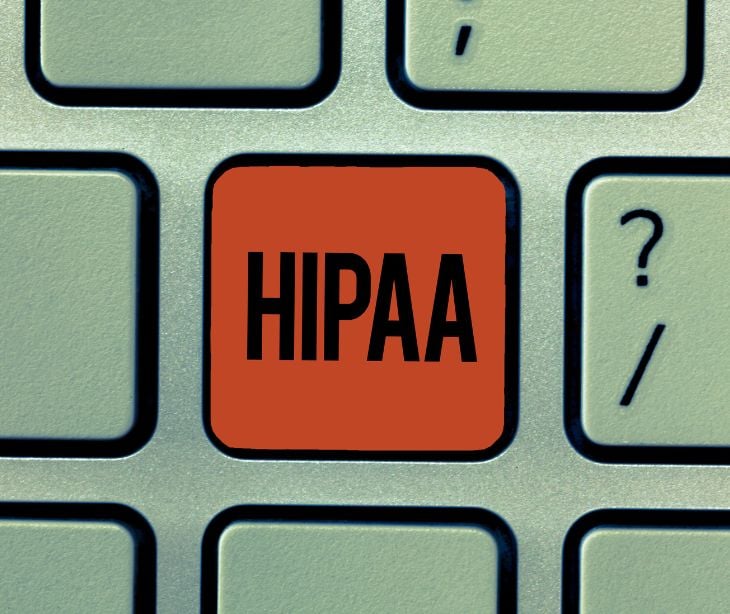2 min read
What is the role of BCC in HIPAA compliant email communication?
Liyanda Tembani
March 25, 2024

The role of blind carbon copy (BCC) in HIPAA compliant email communication is to conceal recipient email addresses from other recipients on the email thread, thereby protecting the privacy of individuals' contact information. This is because email addresses themselves can be considered protected health information (PHI) under HIPAA. However, while BCC helps address this aspect of privacy, it alone does not ensure full HIPAA compliance.
Understanding BCC in HIPAA compliance
BCC is a feature available in most email clients that allows senders to include recipients without revealing their email addresses to other recipients. This is particularly important in healthcare settings, where email addresses can be considered PHI under HIPAA. By using BCC, healthcare professionals can protect the privacy of recipient email addresses and minimize the risk of accidental disclosure.
Read more: Are email addresses protected by HIPAA?
The limitations of BCC alone
While BCC can help conceal recipient email addresses, healthcare organizations must recognize its limitations in ensuring HIPAA compliance. BCC does not encrypt the content of the email, leaving PHI vulnerable during transmission. Without encryption, anyone intercepting the email could potentially access sensitive patient information, violating HIPAA regulations. According to a recent report utilizing data directly from the OCR, email was involved in 18% of breaches in 2023. These statistics prove the importance of ensuring HIPAA compliant email communication practices to avoid breaches.
The components of HIPAA compliant email communication
Two key components are necessary to achieve HIPAA compliant email communication:
- Encryption: Encryption safeguards the confidentiality of PHI during transmission. Emails containing sensitive patient data should be encrypted to ensure that only authorized recipients can access the information. HIPAA compliant email service providers like Paubox offer encryption tools that help protect patient privacy and maintain compliance with regulatory requirements.
- BCC (optional): While BCC can help protect the privacy of recipient email addresses, it should be used in conjunction with encryption for comprehensive security. Including recipients in the BCC field ensures that their email addresses remain confidential, but encryption is still needed to safeguard the content of the email itself.
Best practices for HIPAA compliant email communication
In addition to encryption and BCC:
- Use secure email platforms: Choose email service providers that offer HIPAA compliant encryption tools and security features tailored to healthcare needs. Look for platforms that provide encryption in transit and at rest and secure storage to protect PHI at all stages of communication.
- Train staff on HIPAA regulations: Educate healthcare professionals on the importance of HIPAA compliance and proper email communication protocols. Ensure they understand how to use encryption tools effectively and when to use BCC to protect recipient email addresses.
- Implement additional security measures: Consider implementing encrypted communication platforms for sharing sensitive patient information. These platforms safeguard PHI and offer features designed specifically for healthcare communication.
- Regularly review and update security measures: Stay current with evolving threats and regulatory requirements by reviewing and updating security protocols regularly. Conduct periodic audits to ensure compliance with HIPAA standards and address any potential vulnerabilities promptly.
FAQs
Are there any risks associated with using BCC in email communication?
While BCC helps protect the privacy of recipient email addresses, there are potential risks if not used appropriately. If a recipient replies to an email sent via BCC, their response may inadvertently reveal the presence of other recipients, compromising their privacy.
Can I use email for communicating PHI with patients?
Yes, email can be used to communicate PHI with patients, but it must be done securely to comply with HIPAA regulations. Implement secure email encryption tools, obtain patient consent for electronic communication, and ensure patients know the risks associated with email communication.
What are some common mistakes to avoid when sending emails containing PHI?
Common mistakes to avoid when sending emails containing PHI include sending emails to the wrong recipients, failing to encrypt emails containing PHI, and using unsecured email platforms. Always double-check recipient email addresses, use encryption tools, and secure email platforms designed for HIPAA compliance to prevent errors and ensure patient privacy.
Subscribe to Paubox Weekly
Every Friday we'll bring you the most important news from Paubox. Our aim is to make you smarter, faster.




